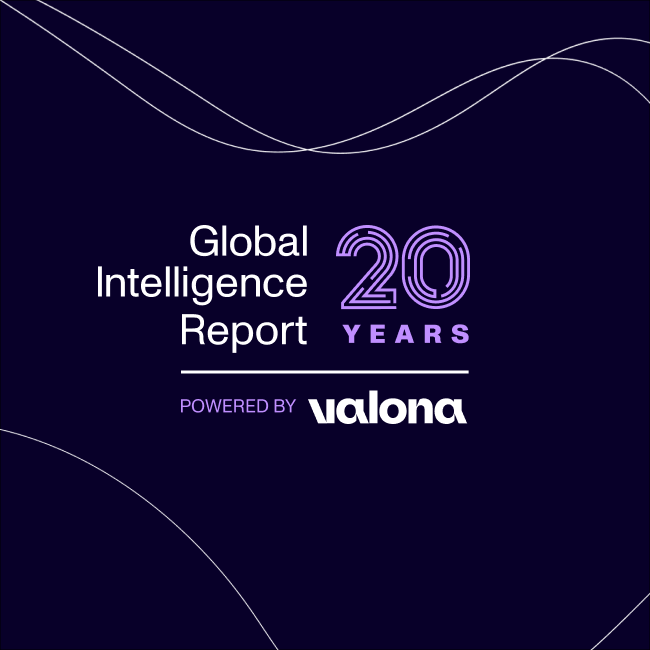
What Is Scenario Planning and Why Does It Matter?
Learn what scenario planning is and how it helps businesses prepare for the future. Discover practical steps to identify key drivers, build scenarios, and create resilient strategies.
Picture this: a decision-making superpower that transforms uncertainty into opportunity. That’s the magic of scenario planning—a tool that doesn’t just predict the future but equips you to thrive in its unpredictability.
By mapping out multiple “what-if” pathways, you gain the foresight to navigate twists and turns with clarity and confidence. Strategic foresight meets practicality here, turning abstract ideas into actionable strategies.
From pinpointing the forces that shape tomorrow to crafting game-changing solutions, mastering scenario planning is less daunting than it seems—it’s your ticket to staying one step ahead.
This article breaks down scenario planning into clear, practical steps:
- Identifying key drivers of change
- Building diverse scenarios
- Testing strategies against scenarios
- Encouraging cross-functional collaboration
- Monitoring and updating scenarios
- Using scenario planning for innovation
What is scenario planning?
Scenario planning is a strategic way to prepare for the future by imagining multiple possible outcomes. It’s not about predicting the future but about exploring “what if” situations that help you adapt to uncertainty. Businesses can anticipate potential changes and create strategies that remain flexible in a shifting environment with this approach.
Unlike traditional forecasting, which often assumes a single likely outcome, scenario planning considers a range of possibilities. This method helps organizations remain proactive, identifying risks and opportunities before they happen.
“Scenario planning isn’t about predicting the future—it’s about staying flexible and prepared for any possibility.”
For example, a company might use scenario planning to explore how changes in technology, market trends, or regulations could impact their operations.
Strategically, scenario planning allows businesses to test their current strategies against different future scenarios. It’s not just about addressing potential challenges but also about spotting new opportunities that can give you a competitive edge.
By embracing uncertainty, scenario planning fosters innovation and ensures your organization stays ready for whatever the future may hold.
Why does scenario planning matter?
Scenario planning helps businesses stay ready for risks and opportunities by encouraging teams to think ahead and act before problems arise. For instance, if a company anticipates potential supply chain issues, they can develop backup plans to keep things running smoothly.
This proactive approach means they avoid last-minute scrambles and stay in control, even during unexpected disruptions. Over time, this readiness builds confidence across teams and strengthens the business’s ability to handle change.
Looking at different possible futures keeps strategies flexible so businesses can adapt no matter what happens. By planning for both good and bad situations, teams ensure their strategies remain relevant as markets or customer needs evolve.
“Scenario planning helps businesses stay ahead, adapt to change, and find success even when the future is uncertain.”
For example, a company that considers scenarios like rapid market growth or economic slowdowns can make quick adjustments while staying on course to meet their goals. This flexibility allows businesses to stay competitive and avoid falling behind when circumstances shift.
Scenario planning also helps businesses find opportunities in uncertainty. Rather than just reacting to challenges, it encourages teams to look for innovative ways to grow or improve.
For example, exploring how AI might transform their industry could inspire new products or services, giving the company an advantage over competitors.
Thinking creatively about the future helps uncover new possibilities that might otherwise go unnoticed, turning potential risks into opportunities for success.
How to apply scenario planning effectively
1: Identifying key drivers of change
Identifying key drivers of change is a crucial first step in scenario planning. These are the factors—both internal and external—that can significantly impact your business’s future. They act as the foundation for building scenarios, ensuring your focus is on what truly matters while preparing for potential challenges or opportunities.
Drivers can include technological advancements, market trends, regulatory updates, economic shifts, or even cultural changes. For instance, the rise of remote work, stricter data privacy laws, or increasing consumer demand for eco-friendly products might all be critical drivers for modern businesses.
To pinpoint these drivers, use a structured approach:
- Analyze external forces like emerging technologies, competitive moves, or new industry regulations. Watch for trends that could influence your market or operations.
- Evaluate internal factors such as your company’s strengths, weaknesses, and vulnerabilities. For example, if your supply chain depends on a single region, geopolitical issues in that area could be a key driver.
- Prioritize the most impactful drivers by focusing on those with the highest likelihood of affecting your goals or disrupting your operations.
Tools like PESTLE analysis (Political, Economic, Social, Technological, Legal, and Environmental factors) and SWOT analysis (Strengths, Weaknesses, Opportunities, Threats) are excellent for identifying and organizing these drivers.
2: Building diverse scenarios
Building diverse scenarios ensures you’re ready for a variety of possible futures. Instead of relying on a single prediction, you create multiple “what if” narratives that range from optimistic to pessimistic, with balanced outcomes in between. This approach allows you to see opportunities and risks from different angles, helping your business adapt no matter what happens.
Each scenario should be grounded in real data to ensure credibility while remaining broad enough to capture a wide range of possibilities. Think of it as crafting stories about the future—each with its own set of challenges and opportunities.
Here’s how to start:
- Identify key themes like market growth, supply chain disruptions, or shifting customer preferences. Focus on areas most likely to influence your business.
- Develop detailed narratives for each scenario. For instance, in an optimistic scenario, imagine rapid adoption of your new product, while a pessimistic one might explore challenges like a recession or regulatory hurdles.
- Incorporate relevant data to make your scenarios actionable. Use industry reports, customer insights, and economic trends to back up your projections.
For example, a retail business might craft scenarios around rapid e-commerce growth, declining foot traffic in physical stores, or unexpected supply chain issues.
Considering these possibilities can test strategies, build resilience, and confidently navigate whatever the future holds.
3: Testing strategies against scenarios
Testing strategies against scenarios helps you identify gaps and refine your plans, ensuring they remain effective in a variety of situations.
Running your strategies through various “what if” scenarios helps you spot weaknesses, address risks, and enhance your ability to adapt to changing circumstances. This process goes beyond simple evaluation—it’s about stress-testing your plans against real-world uncertainties to build resilience.
Here’s how to approach it:
- Evaluate current strategies by applying them to each scenario. Ask yourself: Would this plan hold up in an optimistic, pessimistic, or moderate future?
- Pinpoint vulnerabilities by identifying risks or gaps that could derail your operations. For example, could a sudden market downturn or a supply chain bottleneck cause disruptions?
- Refine and adapt by adjusting your strategies to account for these weaknesses. Focus on creating flexible plans that can shift with changing circumstances.
For instance, a company concerned about supply chain issues might test alternative sourcing options or stockpiling strategies in scenarios where key suppliers face disruptions.
By doing this, they ensure continuity and keep operations steady even when challenges arise. Testing strategies against scenarios is like practicing for the unexpected—it helps your business stay prepared and confident.
4: Encouraging cross-functional collaboration
Cross-functional collaboration enhances scenario planning by bringing in diverse perspectives from across your organization. It ensures strategies are comprehensive and address challenges from all angles.
Collaboration isn’t just about brainstorming—it’s about pooling expertise to create actionable plans that are rooted in real-world insights.
Here’s how to make it work:
Host brainstorming workshops where teams from different departments come together to discuss potential scenarios and solutions.
Include diverse departments like marketing, operations, and HR to ensure a variety of viewpoints are considered. Each team can highlight unique risks or opportunities specific to their area.
Seek external input from industry experts, customers, or partners to broaden the scope and uncover insights your teams may overlook.
For instance, your operations team might identify logistical bottlenecks in certain scenarios, while the marketing team highlights shifting consumer behaviors. When these insights are combined, they lead to more robust and practical strategies.
Cross-functional collaboration isn’t just a box to tick—it’s about building well-rounded plans that reflect the complexity of the business environment.
5: Monitoring and updating scenarios
Scenario planning isn’t a one-time exercise—it’s an ongoing process that adapts to new data, trends, and market changes. Keeping scenarios updated ensures they stay relevant and actionable. This continuous refinement helps your organization remain agile and prepared for evolving challenges.
Here’s how to keep scenarios current:
Review scenarios regularly, such as during quarterly or annual strategy sessions, to account for recent market developments or changes in your industry.
Incorporate fresh data like updated economic reports, competitor moves, or emerging trends to refine your scenarios.
Adjust strategies accordingly to ensure they remain aligned with the latest information and potential outcomes.
For example, a business in a rapidly evolving tech sector might revisit its scenarios every six months to account for shifts in innovation or consumer behavior. This approach helps them stay ahead of industry changes and refine their strategies in real-time.
Monitoring and updating scenarios ensures your plans remain dynamic and relevant, enabling you to stay prepared no matter how conditions evolve.
6: Using scenario planning for innovation
Scenario planning goes beyond managing risks—it’s a powerful way to uncover growth opportunities. By imagining how different futures might unfold, businesses can proactively identify ways to innovate and stay ahead of the curve.
Steps to foster innovation through scenarios:
Spot future market needs by analyzing emerging trends and how they align with potential scenarios.
Generate creative solutions for the challenges each scenario reveals, focusing on long-term impact.
Test new concepts inspired by scenario insights to develop innovative products or services.
For example, a company anticipating how AI might reshape its industry could create new, cutting-edge solutions tailored to future demand. These innovations could position them as leaders in their field, ready to meet evolving customer expectations.
Scenario planning doesn’t just prepare businesses for what’s ahead—it sparks creativity, drives innovation, and ensures they thrive in uncertain times.
Prepare your business for the future with scenario planning
Scenario planning is more than just a strategy—it’s a mindset that empowers organizations to navigate uncertainty with confidence. By identifying key drivers of change, crafting diverse scenarios, and testing strategies, businesses can stay agile and resilient in an ever-changing world.
The ability to anticipate potential futures and adapt quickly gives you a competitive edge. Starting small, like running a scenario-planning workshop or focusing on a single driver of change, can pave the way for integrating scenario planning into your strategic processes. With consistent practice, it can become a cornerstone of how you prepare for and thrive in uncertainty.
Scenario planning is a powerful tool to navigate uncertainty, but putting it into practice can feel daunting without guidance. That’s where expert insights come in.
Valona webinar, Master Competition with Strategic Foresight, dives deep into the principles and techniques of scenario planning, offering actionable strategies to help you stay ahead of change.
From identifying key drivers to crafting adaptable scenarios, this session provides the knowledge you need to make informed, future-ready decisions. Ready to sharpen your strategic edge? Watch now.
FAQ
What is scenario planning?
Scenario planning is a strategic approach to preparing for the future by imagining different “what if” situations. Instead of predicting a single outcome, it explores multiple possibilities to help businesses anticipate risks, seize opportunities, and adapt to uncertainty. This method focuses on flexibility, allowing organizations to create resilient strategies for diverse future scenarios.
Why is scenario planning important for businesses?
Scenario planning helps businesses stay agile and prepared by anticipating potential challenges and opportunities. It promotes proactive decision-making, ensures strategies are flexible, and reduces the risk of being caught off guard. By exploring multiple futures, organizations can remain competitive, identify innovation opportunities, and build resilience in an ever-changing environment.
How do you identify key drivers of change in scenario planning?
Identifying key drivers involves analyzing factors that significantly influence your business, such as market trends, technology advancements, or policy shifts. Use tools like PESTLE and SWOT analyses to prioritize the most impactful drivers. Focus on both external forces, like industry changes, and internal factors, like operational vulnerabilities, to ensure your scenarios address critical issues.
How often should businesses update their scenarios?
Businesses should review and update their scenarios regularly—typically quarterly or annually—to reflect new data, trends, and market conditions. For fast-moving industries, more frequent updates may be needed. Incorporating insights from fresh economic reports, competitor activities, or technological advancements ensures scenarios remain relevant and actionable in a dynamic environment.
Can scenario planning foster innovation?
Yes, scenario planning can spark innovation by encouraging teams to think creatively about future opportunities. Exploring different scenarios helps identify emerging market needs, inspire new products or services, and address challenges with fresh solutions. By imagining diverse possibilities, businesses can proactively develop innovations that set them apart and prepare them for future success.




